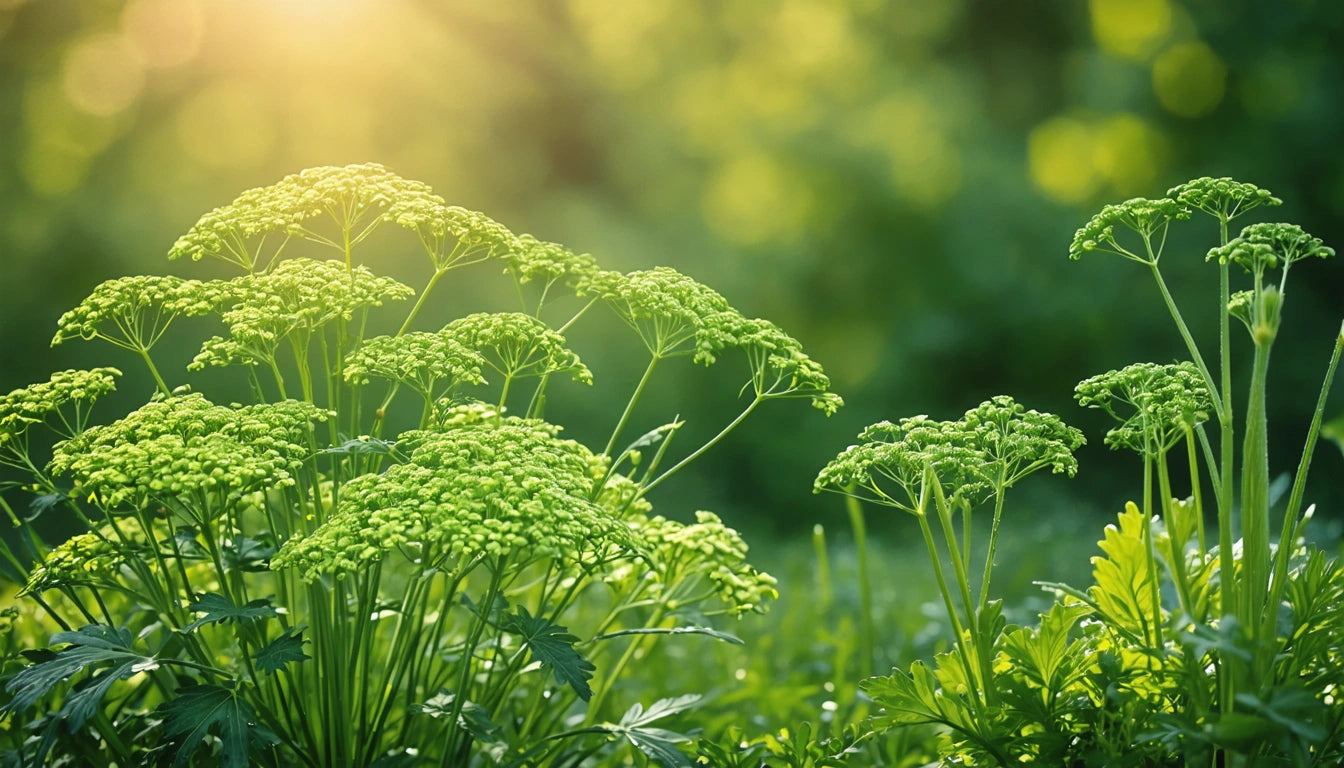Table of Contents
Companion Planting: Best and Worst Plants to Pair with Dill
Dill (Anethum graveolens) is more than just a flavorful herb for pickling and seafood dishes. This feathery plant plays a significant role in companion planting strategies, offering benefits to certain plants while potentially hindering others. Understanding what to plant with dill can transform your garden's productivity and health without chemical interventions.
Benefits of Companion Planting with Dill
Dill serves as an excellent companion plant for many garden vegetables and herbs due to its unique properties. As a member of the Apiaceae family, dill produces umbrella-shaped flower clusters that attract beneficial insects like ladybugs, hoverflies, and parasitic wasps. These insects help control garden pests such as aphids, spider mites, and cabbage worms.
Additionally, dill's aromatic compounds can mask the scent of companion plants, making them less detectable to certain pests. This natural pest management approach aligns with organic gardening principles highlighted in comprehensive guides to natural plant care.
Best Companion Plants for Dill
When considering what is a good companion plant for dill, several vegetables, herbs, and flowers stand out for their mutually beneficial relationships.
Vegetables That Thrive with Dill
- Cabbage Family (Brassicas) - Cabbage, broccoli, Brussels sprouts, and kale all benefit from dill's ability to attract predatory insects that feed on cabbage worms and aphids.
- Cucumbers - Dill enhances cucumber growth and flavor while helping to repel cucumber beetles.
- Lettuce - The shade provided by mature dill plants can protect lettuce from harsh summer sun.
- Onions and Garlic - These alliums help deter pests that might damage dill, creating a mutually protective relationship.
- Corn - Dill can help attract beneficial wasps that prey on corn earworms.
These pairings demonstrate how strategic plant placement can enhance growth outcomes, similar to techniques discussed in plant breeding and reproduction guides.
Herbs and Flowers That Complement Dill
- Basil - Both herbs enjoy similar growing conditions and can enhance each other's growth.
- Marigolds - These flowers repel many garden pests while dill attracts beneficial insects.
- Nasturtiums - They act as trap crops for aphids, keeping these pests away from dill.
- Cilantro - Another umbrella-flowered herb that attracts similar beneficial insects.
Plants to Avoid Pairing with Dill
Understanding what not to plant with dill is equally important for garden success. Certain plants compete poorly with dill or may experience reduced growth when planted nearby:
- Carrots - Despite being in the same family, dill can cross-pollinate with carrots, affecting seed production. Additionally, dill may release compounds that inhibit carrot growth.
- Tomatoes - While young dill can benefit tomatoes, mature dill plants may stunt tomato growth.
- Potatoes - Dill can attract pests that damage potato plants.
- Lavender - Requires drier conditions than dill, making them incompatible neighbors.
- Fennel - Competes aggressively with dill and most other garden plants.
Proper spacing and timing can sometimes mitigate these negative interactions, as proper resource management is key to plant health, similar to principles outlined in guides for optimal plant feeding.
Planting Techniques for Successful Dill Companions
To maximize the benefits of what dill is a good companion plant for, consider these planting strategies:
- Succession Planting - Sow dill every few weeks for continuous availability of young plants, which are generally more beneficial as companions.
- Border Planting - Plant dill around the perimeter of vegetable beds to attract beneficial insects to the entire garden.
- Interplanting - Place dill between susceptible plants like cabbage or cucumbers to provide direct protection.
- Containment - Consider growing dill in containers near incompatible plants to gain benefits while avoiding negative interactions.
Proper planning is essential when determining what can dill be planted with. Like beginner growing guides suggest, starting with a clear garden layout improves overall success.
When growing herbs like dill in a community or commercial setting, it's worth noting that proper safety protocols and packaging considerations become important, especially if the plants or their derivatives will be distributed or sold.
Maximizing Garden Success with Strategic Dill Placement
Dill's dual nature as both a culinary herb and a garden helper makes it a valuable addition to any growing space. By understanding what can I plant dill with and which combinations to avoid, gardeners can create more resilient, productive gardens that require fewer interventions.
For optimal results, observe how dill interacts with other plants in your specific growing conditions. Soil quality, climate, and even the specific varieties you choose can influence companion planting outcomes. Taking notes on successful and unsuccessful pairings helps develop a personalized companion planting strategy that improves with each growing season.
Whether you're growing dill primarily for its culinary uses or as a beneficial companion, its aromatic presence can enhance your garden's biodiversity and productivity when strategically placed. By applying these companion planting principles, you'll be able to harness dill's full potential as both a flavorful herb and a garden ally.











Leave a comment
All comments are moderated before being published.
This site is protected by hCaptcha and the hCaptcha Privacy Policy and Terms of Service apply.